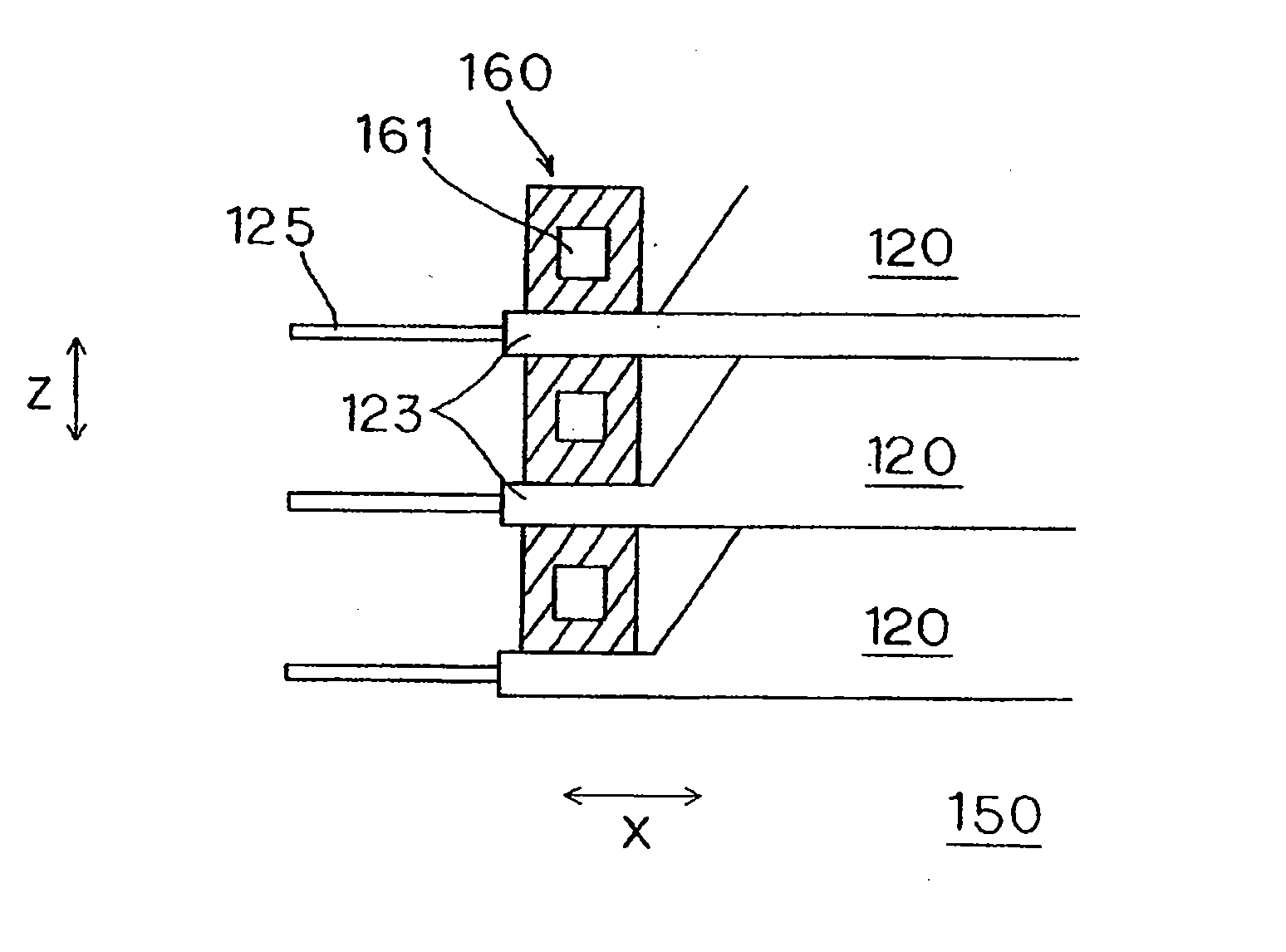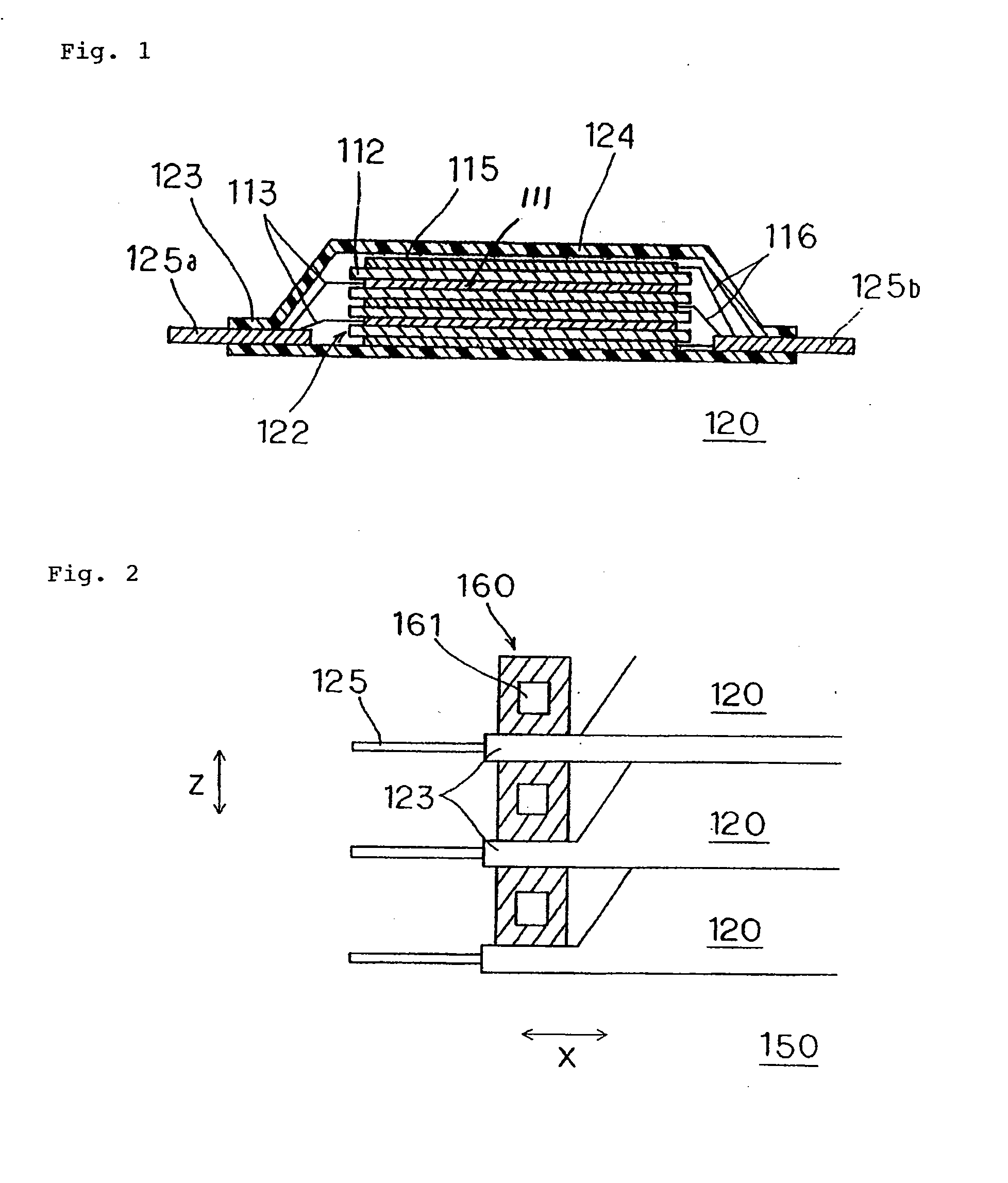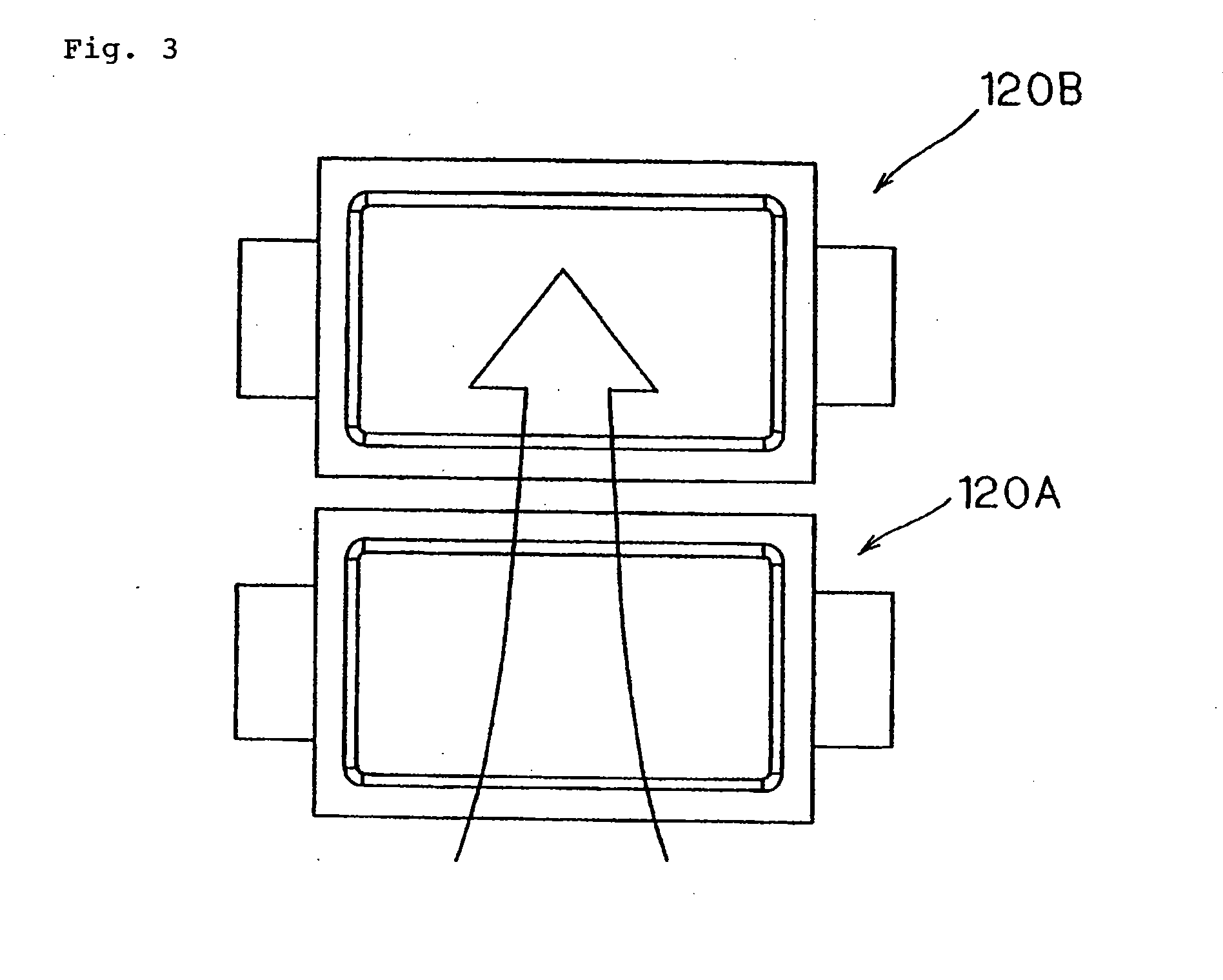Electric device assembly and film-covered electric device structure
a technology of electric devices and assembly parts, applied in the direction of cell components, electrochemical generators, flat cell groupings, etc., can solve the problems of difficult to uniformly cool the two battery cells, difficult to enlarge the assembled battery, and difficult for an elastic material with high hardness to absorb relatively weak vibrations
- Summary
- Abstract
- Description
- Claims
- Application Information
AI Technical Summary
Benefits of technology
Problems solved by technology
Method used
Image
Examples
Embodiment Construction
[0052]Referring next to the drawings, the exemplary embodiment of an electric device assembly of the present invention will be described taking an example of an assembled battery including a group of film-covered batteries. FIG. 4 is an external perspective view showing an assembled battery of the exemplary embodiment. FIG. 5 is a perspective view showing a battery cell unit used in an assembled battery of the exemplary embodiment.
[0053]As shown in FIG. 4, assembled battery 80 is comprised of six parallel-arranged modules 50 provided in layers, each having two battery cells 20A and 20B (also called “battery cells 20”). Pressure contact members 60 are laid out on both sides (with respect to the X-direction in the drawing) of parallel-arranged modules 50.
[0054]A conventional typical film-covered battery shown in FIG. 5 can be used as battery cell 20. Battery cell 20 is a lithium ion secondary battery, and accommodates battery element 22 with an electrolyte inside a closed space formed...
PUM
 Login to View More
Login to View More Abstract
Description
Claims
Application Information
 Login to View More
Login to View More - R&D
- Intellectual Property
- Life Sciences
- Materials
- Tech Scout
- Unparalleled Data Quality
- Higher Quality Content
- 60% Fewer Hallucinations
Browse by: Latest US Patents, China's latest patents, Technical Efficacy Thesaurus, Application Domain, Technology Topic, Popular Technical Reports.
© 2025 PatSnap. All rights reserved.Legal|Privacy policy|Modern Slavery Act Transparency Statement|Sitemap|About US| Contact US: help@patsnap.com



